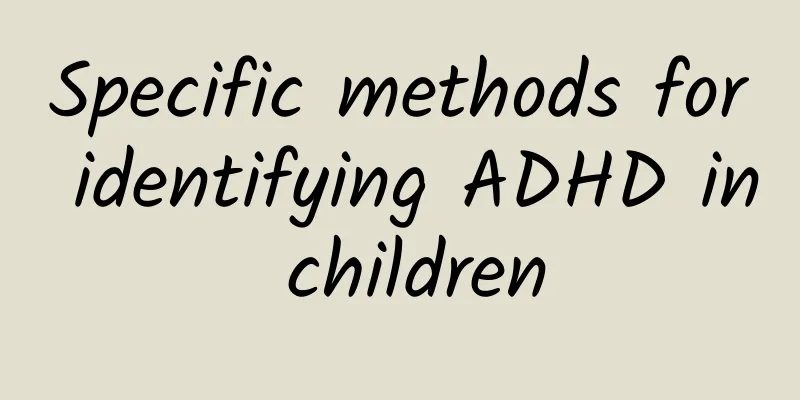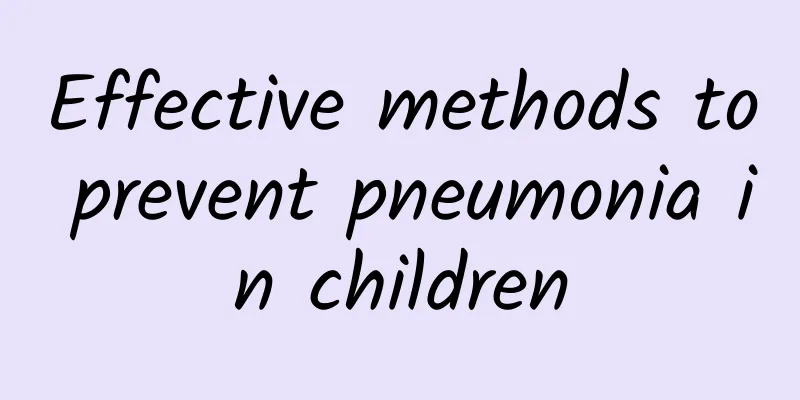Specific methods for identifying ADHD in children

|
ADHD is a common behavioral problem in childhood. Children are most likely to suffer from ADHD to varying degrees. The disease has two main symptoms, namely attention disorder and hyperactivity, which may be accompanied by behavioral impulsivity and learning difficulties. It usually starts before the age of 6, with obvious symptoms in school age and gradually improving with age. Some cases can continue into adulthood. So, what symptoms do children with ADHD often show? Attention deficit disorder (ADHD) Attention disorder is one of the most important manifestations of this disease. The active attention of the child is reduced, while the passive attention is enhanced, which is manifested as inattention, inability to concentrate in class, and easy to be distracted by the interference of the environment. The object of attention frequently shifts from one activity to another. When doing homework, they cannot concentrate, do it halfway, and are careless and sloppy. They start but never finish things, often give up halfway or switch frequently. They procrastinate in doing homework, constantly interrupting it with reasons such as drinking water, eating, and urinating, and the time spent on homework is significantly extended. Some children stare at one place, lose their concentration, and are in a daze. They look at the teacher, but they don’t know what they are thinking about. When the teacher asks questions, they often don’t know the content of the questions. Attention disorder is an essential symptom of this disease. Hyperactivity Hyperactivity is another common symptom. It is manifested by a significant increase in activity, excessive restlessness, running back and forth or making small movements. The child cannot sit still in the classroom, often twisting in the seat, or standing up. In severe cases, the child leaves the seat and walks around, or leaves the classroom without permission. The child talks a lot, is noisy, interrupts, stirs up trouble, affects classroom discipline, and attracts other people's attention. The child likes to watch and play dangerous games and often loses things. There are two types of hyperactivity: one is persistent hyperactivity. The child's hyperactive behavior is seen in any occasion, such as school and home, and is often more severe. The second is situational hyperactivity. The hyperactive behavior only appears in certain occasions (mostly in school) but not in other occasions (home), and the impairment of various functions is relatively mild. Impulsiveness Emotionally unstable, easily irritable, impulsive, willful, and poor self-control. Overexcited by external stimuli and easily frustrated. Act without considering the consequences, engage in dangerous or destructive behavior, and do not learn lessons afterwards. Learning difficulties The main manifestation is poor academic performance. The intelligence of children with ADHD is normal or basically normal, and the cause of learning difficulties is related to inattention and hyperactivity. The time when learning difficulties appear depends on the intelligence level and the severity of ADHD. Children with severe ADHD with medium and low intelligence levels may have learning difficulties in the early school age. Those with higher intelligence levels and milder hyperactivity symptoms may have learning difficulties in junior high school. Neurodevelopmental disorders About half of the children have soft signs of the neurological system, which are manifested as clumsy rapid alternating movements, uncoordinated ataxia, inability to walk in a straight line, difficulty standing with eyes closed, positive finger-to-nose test, and inflexible fine motor skills. Some children may have visual-motor disorders and spatial position sense disorders. |
<<: Diagnostic criteria for ADHD in children
>>: 5 Auxiliary Examinations for ADHD
Recommend
Recommendations for the prevention and treatment of breast milk diarrhea in the community
What are the community prevention and treatment r...
How many days does it take for a child to recover from mumps?
Children with mumps usually need 7 to 10 days to ...
How much does it cost to treat diarrhea in children?
How much does it cost to treat diarrhea in childr...
What are the routes of infection for mumps?
What are the routes of infection for mumps? Mumps...
What is the cause of polio?
Polio is a very serious acute infectious disease....
Clinical manifestations of diarrhea in children
The current weather temperature is getting higher...
Is polio treatable?
Polio cannot be completely cured, but early diagn...
Which hospital is the best for jaundice treatment?
Neonatal jaundice refers to a disease characteriz...
What causes dark yellow skin? What are the common symptoms of dark yellow skin?
Dark yellow skin is caused by many reasons. In or...
How to use the diarrhea patch for children
How to use the diarrhea patch for children? 1. Th...
What to do if children have repeated infection with Mycoplasma pneumoniae
Children with recurrent Mycoplasma pneumoniae inf...
Will I get darker if I drink vc effervescent tablets during the day? Is it true that vc effervescent tablets can also remove freckles?
There are many flavors of VC effervescent tablets...
What to do if your baby has an upper respiratory tract infection and coughs
The baby's upper respiratory tract infection ...
What should I do if my baby has eczema on his face? What details should I pay attention to if my baby has eczema on his face?
Babies under one year old are more likely to suff...
What are the symptoms of mycoplasma infection in children?
The most common symptom of mycoplasma infection i...









